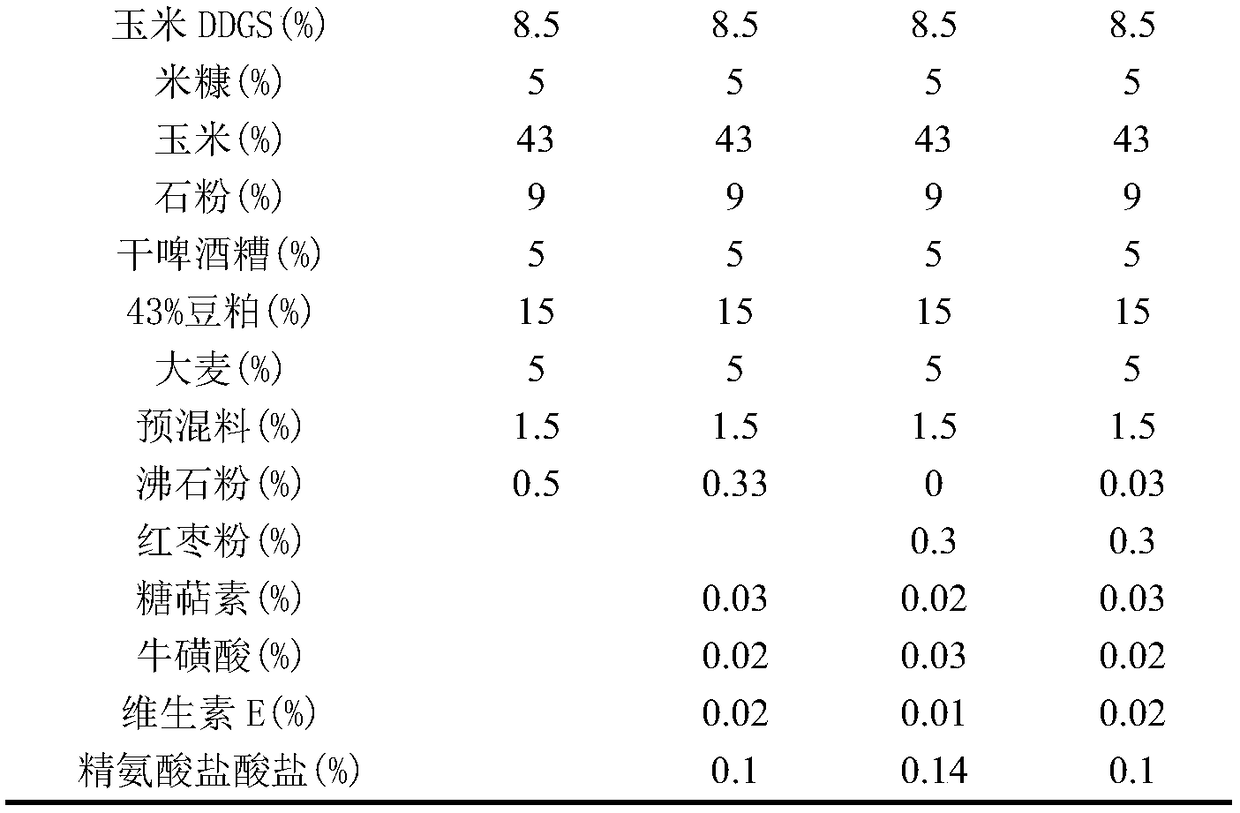Compound feed capable of reducing oxidative stress of laying ducks as well as preparation method and application of compound feed
A technology of oxidative stress and compound feed, applied in application, animal feed, animal feed, etc., can solve the problems of low disease resistance, frequent oxidative stress, and high mortality of laying ducks, so as to increase egg production rate and reduce death The effect of increasing the rate and increasing the amount of expression
- Summary
- Abstract
- Description
- Claims
- Application Information
AI Technical Summary
Problems solved by technology
Method used
Image
Examples
Embodiment 1
[0038] The experiment adopts a single-factor experiment design. The experiment selects ducks with similar body weight, healthy and peak laying period. They are randomly divided into 5 treatments, each treatment has 10 repetitions, and each repetition has 50 ducks. The five treatment groups are: control group, treatment 1, treatment 2, treatment 3 and treatment 4 (this case). The control group was fed with a certain manufacturer's diet on the market, and the treatment 1, treatment 2, treatment 3, and treatment 4 groups were fed with 4 kinds of self-made diets. Experimental stage: 180 days to 330 days. The experimental ducks were reared in captivity, and were reared repeatedly. Open and close the door of the duck house at 6:30 and 17:30 every day, 16 hours of light per day, natural ventilation, regular feeding at 7:00, 12:00, 17:00, free drinking water; 8:00, 17:30 Collect duck eggs regularly, check the health status of duck flocks, and clean and disinfect regularly. The feed...
Embodiment 2
[0057] The experiment adopts a single-factor experiment design. The experiment selects ducks with similar body weight, healthy and peak laying period. They are randomly divided into 5 treatments, each treatment has 8 replicates, and each replicate has 60 ducks. The five treatment groups are: control group, treatment 1, treatment 2, treatment 3 and treatment 4 (the embodiment of the present invention). The control group was fed with a certain manufacturer's diet on the market, and the treatment 1, treatment 2, treatment 3, and treatment 4 groups were fed with 4 kinds of self-made diets. Experimental stage: 180 days to 330 days. The feeding and management mode of test duck is the same as embodiment 1. The feed formula is shown in Table 5.
[0058] The test laying duck was 330 days old, and 6 laying ducks that were close to the average body weight of the repetition of the treatment were taken out from each repetition of each treatment group. After weighing its individual weight...
PUM
 Login to View More
Login to View More Abstract
Description
Claims
Application Information
 Login to View More
Login to View More - R&D
- Intellectual Property
- Life Sciences
- Materials
- Tech Scout
- Unparalleled Data Quality
- Higher Quality Content
- 60% Fewer Hallucinations
Browse by: Latest US Patents, China's latest patents, Technical Efficacy Thesaurus, Application Domain, Technology Topic, Popular Technical Reports.
© 2025 PatSnap. All rights reserved.Legal|Privacy policy|Modern Slavery Act Transparency Statement|Sitemap|About US| Contact US: help@patsnap.com



